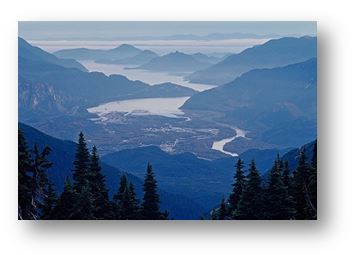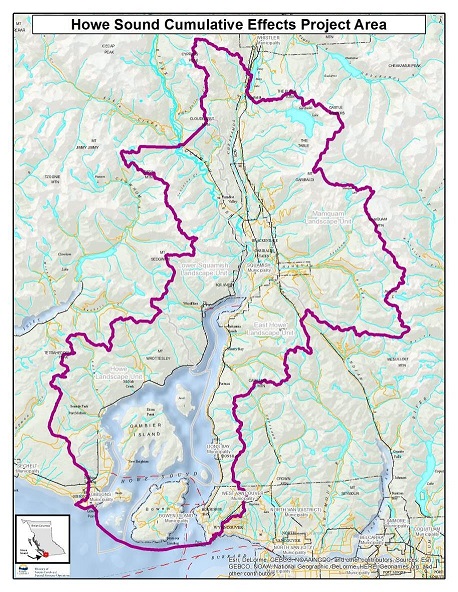Howe Sound Cumulative Effects Project
Project Description
Over the past several years, increased land and resource development applications in the Howe Sound area have prompted some local governments and stakeholders to express concern about the potential for cumulative effects (CE) on environmental values such as recovering land and marine ecosystems.
In January 2014, the province approved the phased implementation of the Cumulative Effects Framework (CEF) in BC and began to collaborate with local governments and First Nations to explore the possibility of initiating a CE assessment project tailored to the Howe Sound area. The province approved the development of a Howe Sound CE Project in the summer of 2015 and committed to completing current condition assessments for some key initial CE values that were also of interest to local First Nations and other levels of government.
 The Howe Sound CE Project represents the Province’s first application of the CEF to the South Coast Natural Resource Region. The project will help with the implementation of a coordinated, multi-sector approach to assessing and managing cumulative effects. The project will also provide valuable transparent baseline and trend information on key Howe Sound values to better inform the province, First Nations, other levels of government, and non-government stakeholders on future land use decisions. After applying CEF to the Howe Sound area, the province will continue to implement a long-term integrated monitoring approach to other areas in the South Coast Natural Resource Region.
The Howe Sound CE Project represents the Province’s first application of the CEF to the South Coast Natural Resource Region. The project will help with the implementation of a coordinated, multi-sector approach to assessing and managing cumulative effects. The project will also provide valuable transparent baseline and trend information on key Howe Sound values to better inform the province, First Nations, other levels of government, and non-government stakeholders on future land use decisions. After applying CEF to the Howe Sound area, the province will continue to implement a long-term integrated monitoring approach to other areas in the South Coast Natural Resource Region.
Location and Values
The Howe CE Project area is located about 10 km northwest of the City of Vancouver and stretches from the Strait of Georgia in the south almost to the Resort Municipality of Whistler in the north. The project area boundary generally follows the height of land and contains a number of smaller watersheds that drain into Howe Sound.
There were seven initial CE values to be monitored and assessed through the Howe Sound CE Project: Aquatic Ecosystems, Old Growth Forest, Forest Biodiversity, Forest Visual Quality, Grizzly Bear, Roosevelt Elk, and Marbled Murrelet. Current condition assessments are available for all these values in web maps and/or reports on this site. Moving forward, the current condition assessment of these CE values will be made available to the public through the South Coast Stewardship Baseline Objectives Tool (SBOT).
The current condition assessments for the Howe Sound CE Project give a general indication of some cumulative impacts from past and current activities, such as high road densities and limited old-growth at lower elevations. The assessments also highlight positive trends including stable to increasing elk populations and decreasing impacts to forest visual quality. These current condition assessments will provide additional information for decision makers when considering impacts to values and potential mitigation or management recommendations.

